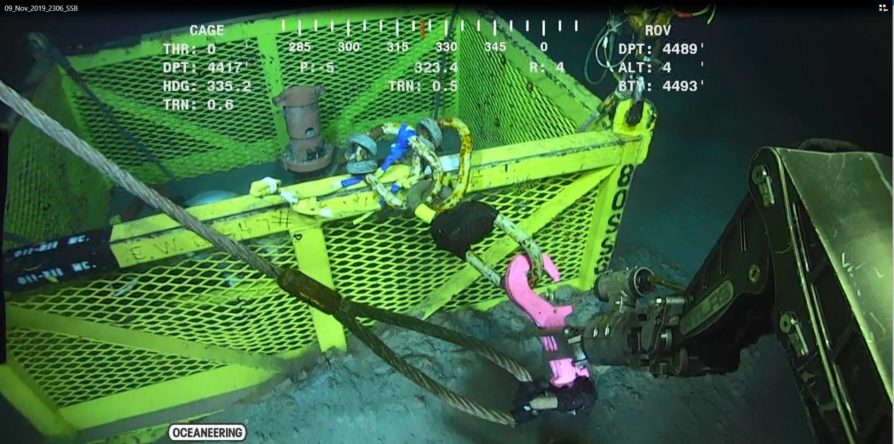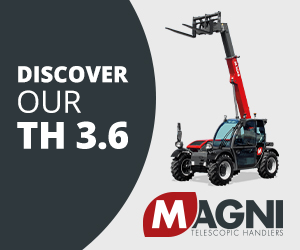)
RUD ROV Hooks for Subsea Installations
Subsea construction often requires specialised equipment and Oceaneering International used four 10-tonne capacity remotely operated vehicle (ROV) hooks supplied by RUD recently, to fulfill two major subsea contracts in the Gulf of Mexico.
Oceaneering was contracted by a major offshore oil and gas company to deploy six LBL array Compatt frames (a transponder used for high precision survey and construction operations) and populate the array in 7,200 fsw using the 257 ft-long multi-purpose support vessel (MSV), Connor Bordelon. Sourced from RUD distributor LiftPull, Oceaneering first used the hooks to install long baseline (LBL) transponder frames, weighing 2,000 lbs. each at specified subsea locations.
In a second contract for similar clients, the ROV hooks were again used to install a rigid M-shape jumper and associated subsea distribution hardware. Here, the hooks were used to make several smaller lifts of ancillary equipment and frames, weighing between 5,500 lbs. and 10,000 lbs., in support of the jumper installation using the 309 ft.-long MSV Cade Candies.
Dan Cheek, engineering manager, Subsea Projects Group at Oceaneering, said: “We were looking for a safe and time-efficient solution to connect and disconnect loads subsea using a ROV. We needed something to reduce the risk of dropped objects, especially when passing through the water interface, and provide a user-friendly subsea solution. The alternative option would have been to use a ROV shackle in place of a ROV hook.” The LBL Compatts allow for detailed acoustic positioning of subsea assets by surface vessels and tracking of the ROVs. Cheek explained that the frames hold the transponders upright subsea and off the seabed.
LiftPull serve as a DNV GL-qualified partner for marine and offshore applications and regional sales manager Ruben Delgadillo, said: “The safe lifting and lowering of loads on deck and underwater up to depths of up to 10,000 ft.—coupled with ambient conditions, unpredictable currents and difficult lighting—presents enormous challenges. Further, the sector is nearly always time pressured and precision is always fundamental to safety.” He added that “The new RUD ROV hook provides two efficient lifting solutions for demanding marine and offshore applications. Its innovative safety mechanism makes it impossible to accidentally open the hook.
RUD also offers a higher capacity, 25-tonne version of the ROV hook. Cheek said: “We intend to use the 10-tonne capacity hook for upcoming contracts; it is especially useful for deploying and recovering the ancillary equipment and frames required to complete many of our projects. However, we are also excited about the 25-tonne version and see potential use for it on future assignments.”











